
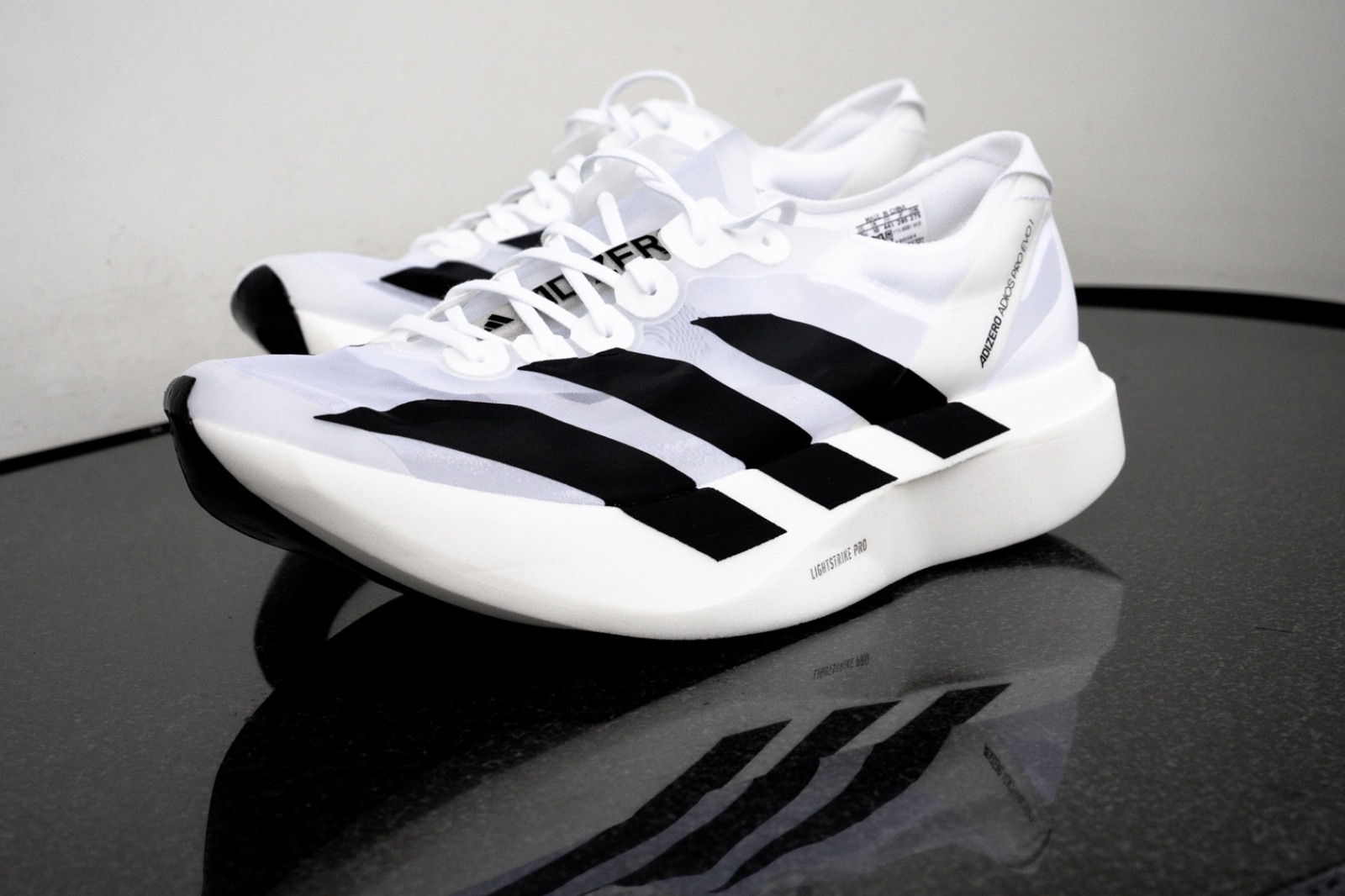
We independently review everything we recommend. When you buy through our links, we may earn a commission.
5.1 oz. (144 g) for a US M10.5 (unisex sizing)
39 mm in heel, 33 mm in forefoot (6 mm drop)
Serious marathoners looking for the tool with the sharpest edge to accomplish big goals
New non-compression Lightstrike Pro midsole, all-new rubber compound, 40% lighter than the Adios Pro 3















THOMAS: This is less of an intro and more of a disclaimer. The Adidas Adizero Adios Pro Evo 1 is a shoe built for one purpose: to get an athlete from the start of a marathon to the finish line in the most efficient way possible. And when I say “athlete,” I mean elite athletes, like Tigist Assefa, who just smashed the women’s world record at the Berlin Marathon by over two minutes.
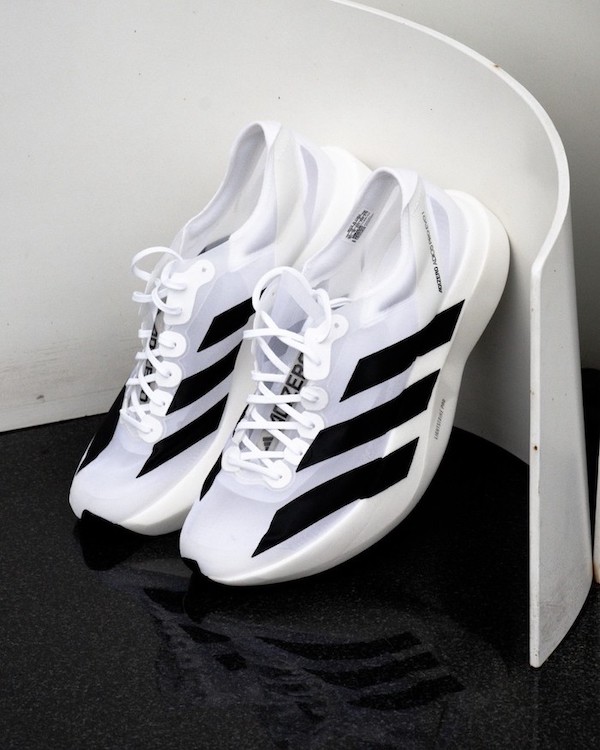
It’s a pretty shoe
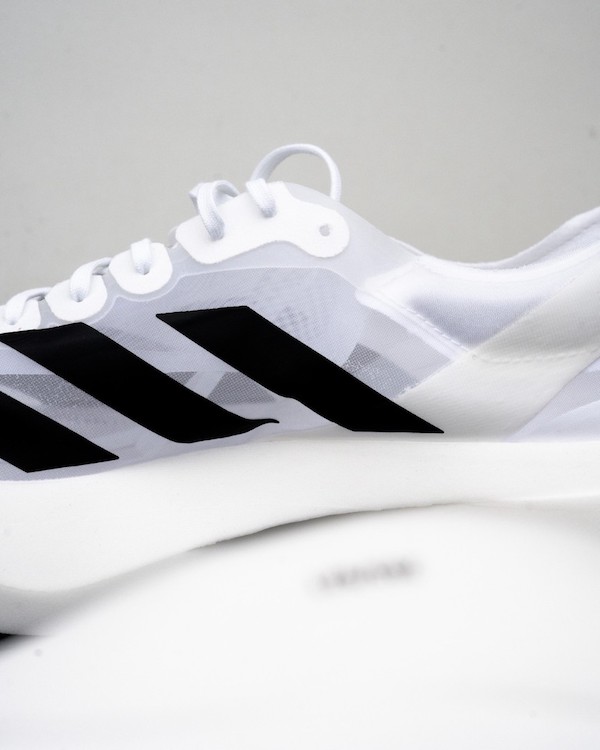
Choose your sock color wisely
Pace is a sensitive topic for runners. Some people are more self-conscious of running pace than body image and/or weight. Anyone who uses Strava knows this. However, unless you’re a professional runner or aiming to be one, your individual pace shouldn’t matter to anyone but yourself. Nobody reading this post is the fastest runner in the world. Even if you’re as fast as Tigist Assefa today (you’re not), someone faster will come along, someday.
If you’ve ever seen our own personal race results, you know we have no place in pace shaming. We do what we can with what we’ve been given, and that’s that. But every once in awhile, a shoe comes along, and suddenly pace does matter. It’s not a matter of gatekeeping, it’s just a matter of the purpose of a tool designed for racing at the highest level of sport.
The Adidas Adizero Adios Pro Evo 1 is that shoe. While a total of 1,042 shoes will be released into the wild this fall over the course of two drops (good luck procuring one), the shoe is essentially a prototype. In many ways, it’s not even a real running shoe. It’s an almost unbelievable 5.1 oz (145 g) for a US M10.5, it has a midsole with all the durability of a Styrofoam cup, and it costs a staggering $500.
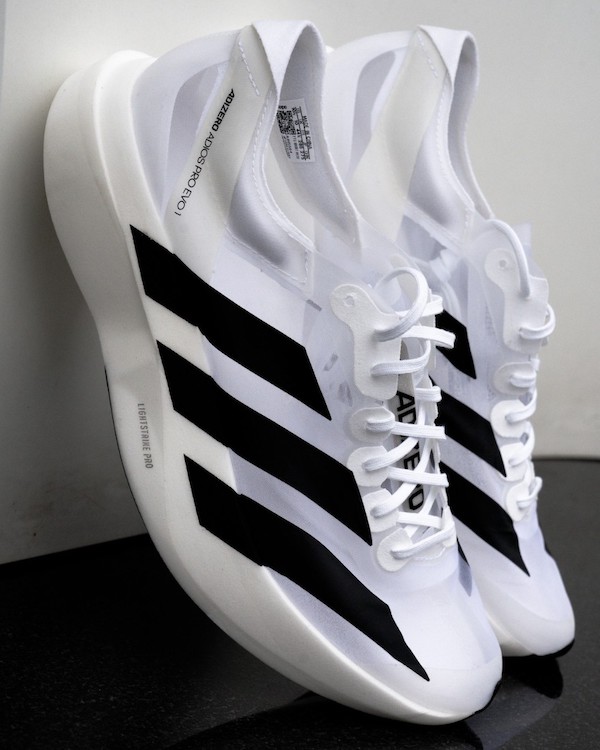
Translucent fine mesh upper
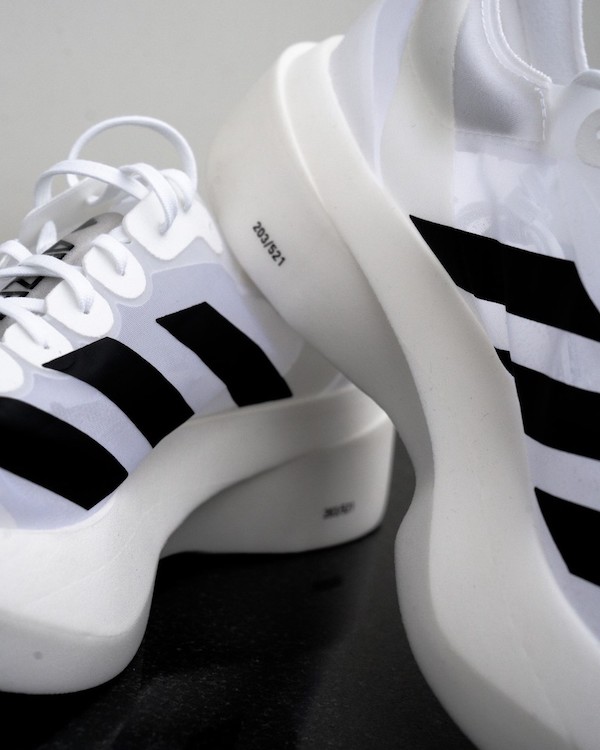
Limited to 501 pairs for each release
In short, it’s not meant for you. Or me. It’s a single-use shoe meant for Adidas-sponsored marathon runners looking to break world records in the lightest marathon shoe ever created. I mean, they even include a disclaimer card with the shoes that essentially tells the owner it’s not meant for anyone who runs slower than a 3:30 marathon, and that’s probably them just playing nice.
Really, it’s somewhat surprising that this shoe was even released to the public, because it didn’t have to be. (There’s a popular misconception that the World Athletics guidelines force brands to do a wide release for any race day shoe to be legal, which is actually not true since the rule was amended. Hence, Kipchoge running in the Nike Alphafly Next% 3 in Berlin.)
Nevertheless, if we get a chance to try a shoe, we’ll certainly give our best shot at reviewing it. Which is what I did. Here’s my review.
Shop the Shoe - UnisexTHOMAS: The first thing I should mention is that this shoe almost doesn’t exist in real life. It is mind bogglingly light. Picking the shoe box up for the first time, it felt empty. Holding the Evo 1 is surreal. It almost feels like a prank, like holding a hologram. It brings to mind Frodo, when he received a Mithril vest from Bilbo. I think he said: “Damn! this shit is super light!” He didn’t say that, but the shoe does feel magical, especially when you get it on the foot.
While all the typical parts of a shoe technically exist, every detail is reimagined, squeezing out any unnecessary grams. Everything has been stripped down to where only the essential parts remain, much like a performance race car. The fine mesh upper is gossamer-thin and translucent. The shoe appears white. However, it’s more like a polar bear’s coat. The shoe will essentially turn the color of your socks that day.
The tongue is just a flap of the same mesh as the upper with a small, foam pillow strip to protect the arch from lace bite. There are welded lace eyelets, and the toe cap is basically tape. The most complicated construction on the upper is the heel counter, which is mostly the same as the Adios Pro 3, something Adidas athletes asked to keep when testing out the shoe.
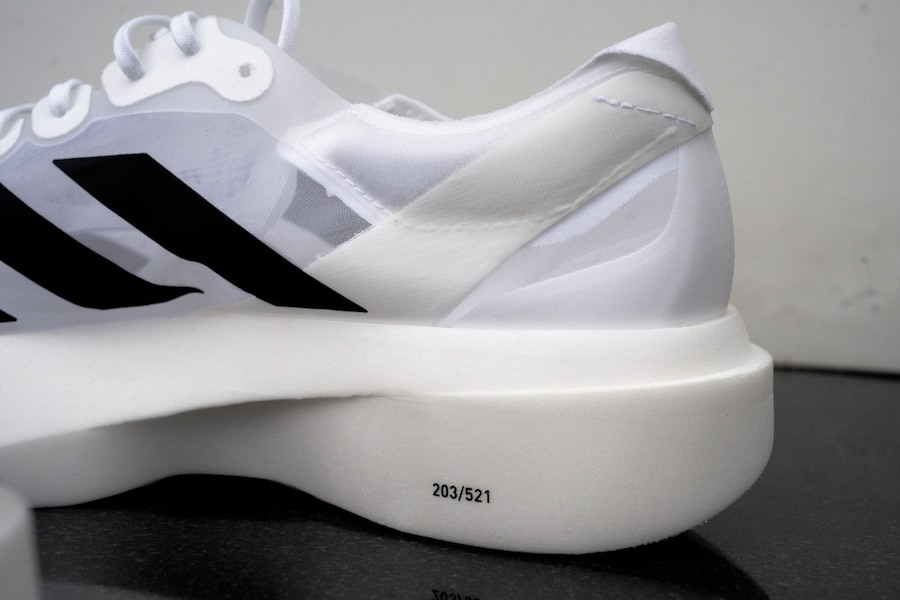
39 mm midsole stack in heel
Next up is the midsole. One of our Instagram followers mentioned that the midsole looks like a Magic Eraser, and since then, I can’t get it out of my head. The Lightstrike Pro midsole is only Lightstrike Pro in name; it’s different from the versions found in the Takumi Sen or Adios Pro in that it’s made from a non-compression foam. There’s debate as to whether it’s TPE or a blend of TPE and EVA, but no one really knows because Adidas won’t divulge.
Either way, it’s pretty great. Again, Adidas didn’t budge when asked exactly how the midsole is made in a “non-compressed” way that’s also not injection molded, but it appears that the foam was just blown up into a big block, then pieces from that block were cut out and sandwiched between the same EnergyRods found in the Adios Pro 3. If you look closely, you can even see some irregularities in the cuts of the foam.
Point being, if a foam is blown up without sitting inside a mold, it will naturally have more air in the foam, giving the shoe more bounce. Ah, but there’s a tradeoff for everything. Bigger air bubbles means faster compression, which will inevitably reduce the longevity and resiliency of the midsole.
So while the foam doesn’t feel revolutionary, the lighter weight is noticeable. Again, the carbon fiber EnergyRods are sandwiched in between the two layers of midsole. The geometry of the rods is slightly modified from the Adios Pro 3, as the rocker geometry in the Evo 1 has been moved back from the toe for a more aggressive feel, with the pivot point now sitting at 60% of the length of the shoe.
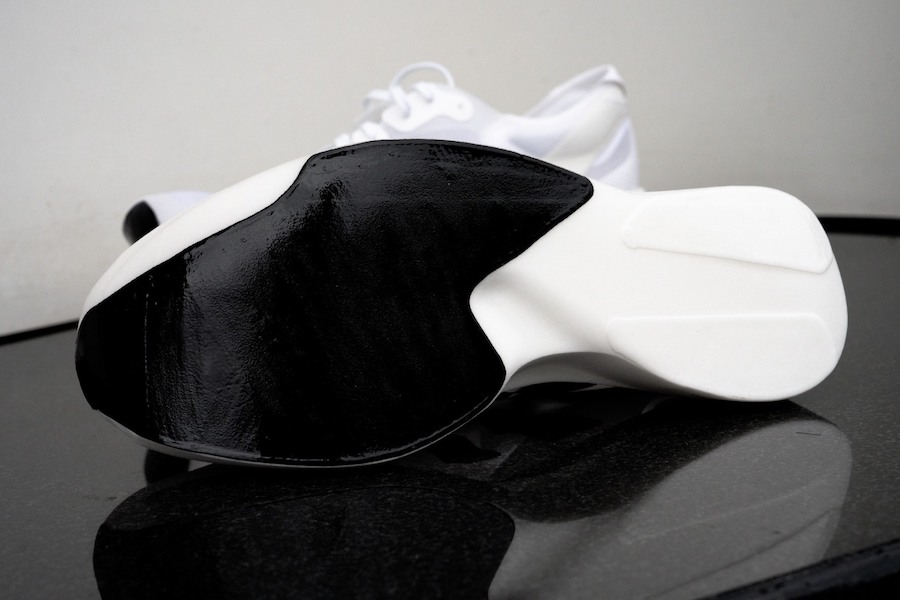
All-new rubber formulation for outsole
I ran a 7.6-mile workout of six, 800-meter repeats on a paved loop. My goal was to run a 7:15 minute per mile pace without looking at my Coros. My splits were 6:38, 6:40, 6:38, 6:46, 6:48, and 6:50. While this isn’t scientific, the shoes felt great throughout the workout. As I reached the end of the 800s, I noticed how the feet felt light through my stride, and the smooth toe-off from the pivot point moved back behind the toes. Additionally, you can feel the rods, in a good way, when you push the pace.
The rods definitely give a pop of the toe, and it does feel more aggressive than the Adios Pro 3. Since it’s a lighter foam in the Evo 1, it compresses faster which makes you feel everything in the shoe. Over the course of 26.2 miles, this could be an issue, but I didn’t have any problems during my workout. It’s one of my favorite feels in a racing shoe because when the foam and rods combine, they’re so weightless that there’s almost nothing underfoot to create any kind of resistance.
Whereas, in shoes like the Nike Alphafly or New Balance SC Elite 3, or even the Vaporfly, you still have some bottom weight. In fact, they’re altogether 40-50% heavier than the Evo 1, which, over the course of a marathon, could make a big difference. Either way, I felt like the combination of the rods and rocker in the Evo 1 gave just as much propulsion and energy return as any of the top elite race day shoes out there, and it’s doing it at almost half the weight. When it comes to race day and achieving your grandest goals, that may make all the difference.
Overall, the workout in the shoes was moderate to strenuous and felt great in the Evo 1.
Finally, like icing on a cake (more like ganache), there’s the all-new outsole rubber, which looks like Venom’s skin poured onto a shoe. It feels equal to the grip and traction found in the traditional Continental outsole, but with nearly 20 grams of weight savings. The workout I ran was on a morning with moisture on the ground from the previous night’s rain. I had zero issues with grip.
Shop the Shoe - Unisex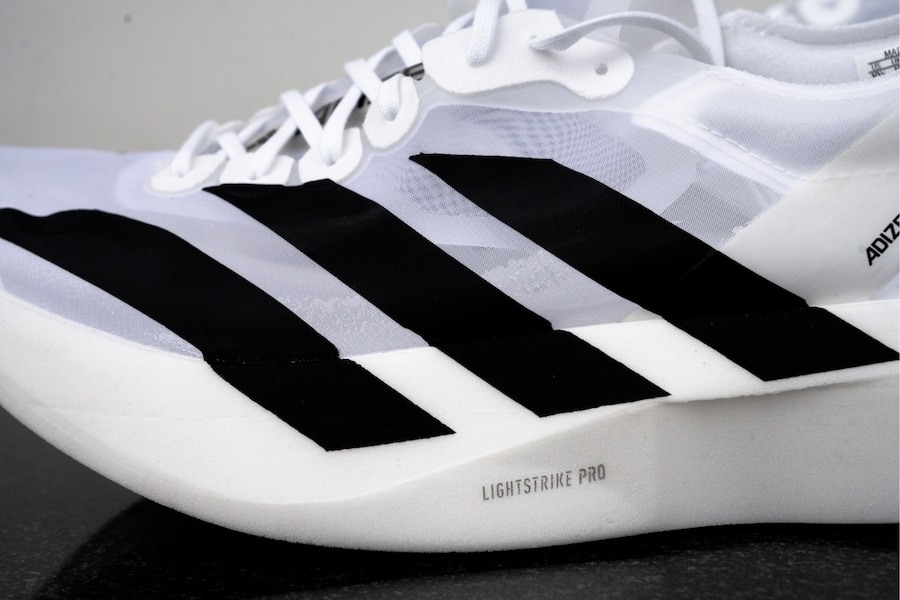
Lateral details of the Evo 1
THOMAS: The shoe is fragile. It will likely disintegrate before you get to 100 miles, but I’m going to try. After one run, there are visible bumps and bruises in the midsole and a bit of separation of the outsole where a piece was taken out by a rock. The smooth bottom also has dimples that highlight the EnergyRods’ location. That said, Adidas has been as transparent as the upper of this shoe in regards to its lifespan, making it abundantly clear this shoe is only meant for one race. The price and the lifespan will keep many runners from experiencing this shoe.
It seems like over the last couple years, most Adidas midsoles come with an “End Plastic Waste” slogan emblazoned on the insole. Obviously, a one-time shoe is a pretty counterproductive way to achieve that goal. Hypocrisy? Maybe. Then again, a pair of these shoes is equal to, what– a few water bottles? Would we love it if single-use plastics didn’t exist? Of course. But in the grand scheme of things, do 1,000 pairs of a 4.8-ounce shoe move the meter at all? Let’s be real– you give out more disposable crap in the gift bags at your kid’s birthday party than what’s in a pair of Evo 1.

Small foam padding strip on tongue

Weighs under 5 ounce for a UK8
We’ve seen start lines at races and swag bags at expos, it’s a dumpster zone of disposable ponchos and water/Gatorade bottles. Let’s not talk about the transportation options to and from those places. What about wearing hydration vests instead of taking plastic/paper cups at every hydration station during a race? We’re all guilty AF at contributing waste, so while, yes– we’d prefer more than one marathon out of a shoe before it’s discarded– it’s not any more wasteful than the easy outs we already take every day. Plus, let’s be real– you’re not throwing this shoe out. This is staying in a glass case on the living room mantel to celebrate that marathon PR.
Shop the Shoe - UnisexTHOMAS: I have been fortunate to have run in every production pair of super shoes since the OG Vaporfly, so I was excited to see how these stack up. Adidas did something special here, and it will move every shoe design forward, much like Nike did with the Vaporfly 4%. This is the first race-day shoe to leapfrog Nike since the foam wars started. That is huge in itself. I enjoyed my miles in the Evo 1 tremendously and I am surely saving the rest of it for a goal marathon.
Adidas states that this shoe is for the top-tier athlete. At the $500 price tag, I would agree. Performance-wise, this shoe isn’t a huge gap up from the $250 Adizero Adios Pro 3. But there is a separation, for sure. Would I personally invest in this shoe for my own race goals? Doubtful.
But if I were someone who had everything else locked down, including my training, nutrition, cross-training, and mental game, and I were going for a huge personal goal (i.e. BQ or OTQ), then yeah, there’s value there.
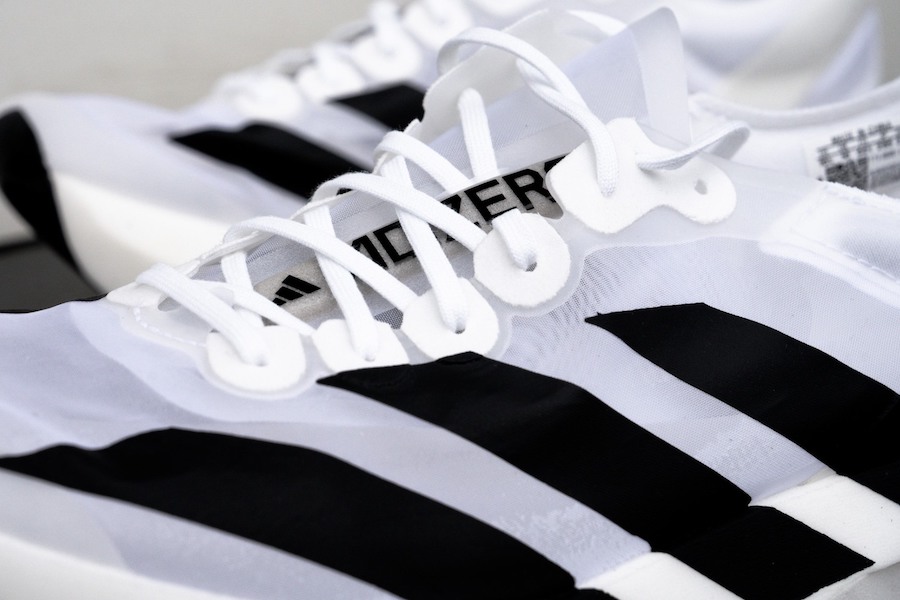
Laces on Adidas Evo 1
Essentially, the Evo 1 should be the final puzzle piece for a can’t-miss swing on a big goal. For that reason alone, I wish we could’ve landed Meaghan’s size for the upcoming Chicago Marathon. She is exactly the person who this shoe is meant for. Because the Evo 1 is a beautifully executed top-tier tool meant for an artist.
Disposable things exist that cost a lot of money. Omakase sushi, 20-year aged whiskeys, and Kobe beef. You don’t have to buy them, and in most cases, you probably shouldn’t. Because it’s not meant for you. There are chef’s knives that cost thousands of dollars. However, when I’m in the kitchen, I only require a regular set of Ginsu.
You can register for you chance to purchase a pair of Adidas Adizero Adios Pro Evo 1 at adidas.com by using the link below.
Shop the Shoe - UnisexInterested in learning more about the design and construction of the shoe? Check out our interview and full walkthrough of the Adios Pro Evo 1 with Charlotte Heidmann, Senior Global Product Manager, Running Footwear for Adidas.
Have something to say? Leave a Comment
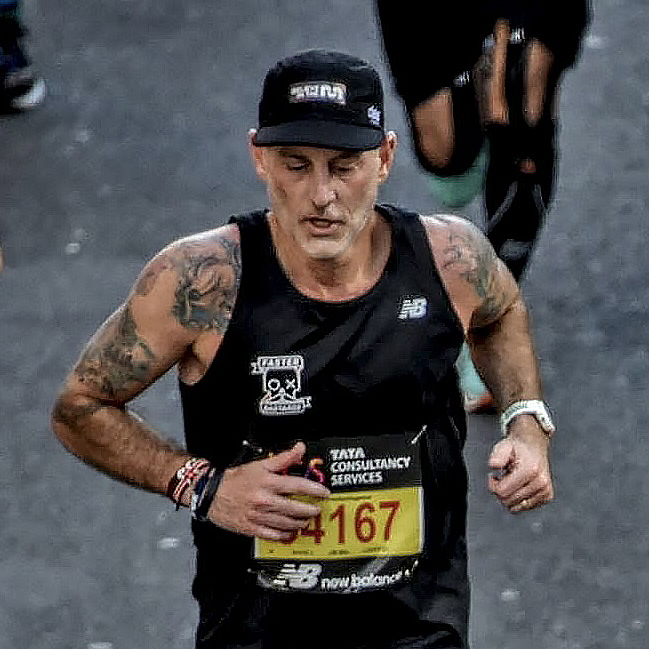
As the founder of Believe in the Run, Thomas’s goal is to help runners pick the shoes and gear that will make their running experience the best that it can be.
More from Thomas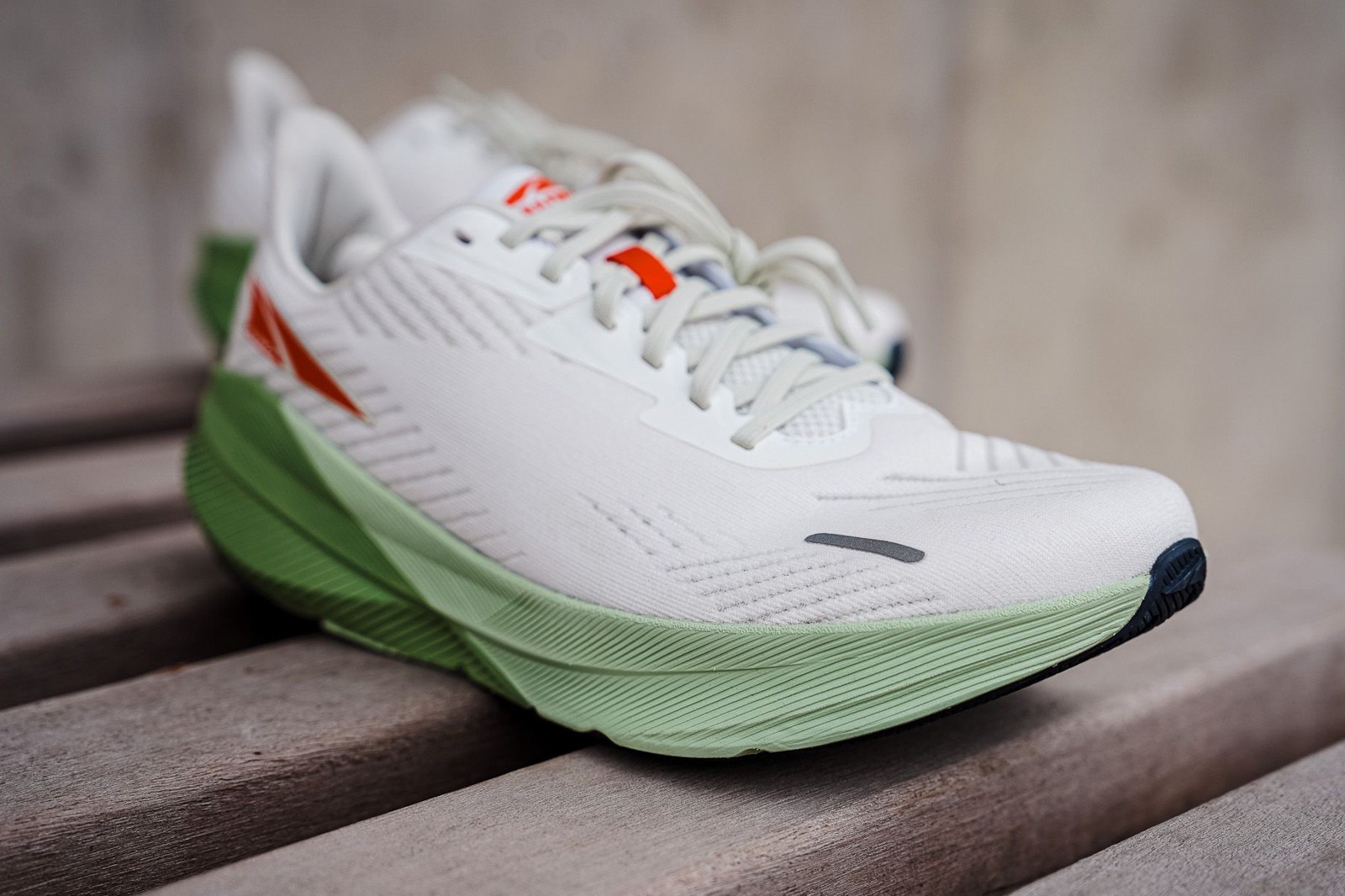
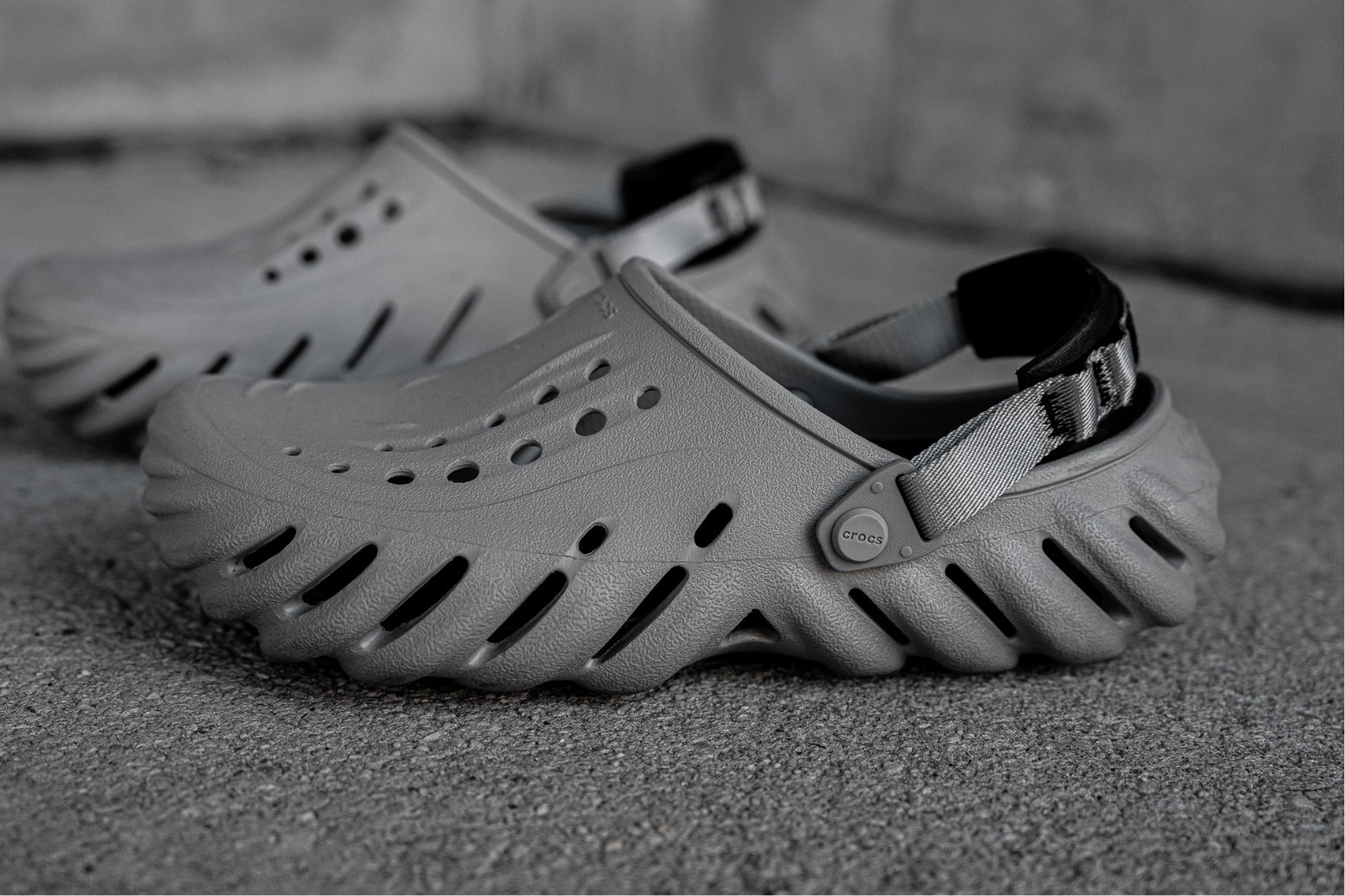
I thought about this shoe for breaking the 1:30 half marathon (my goal PR 1:29). Seems like a great half marathon shoe.
I love the adios pro 2 TME and takumi sen 8 TME. Really wish the Takumi Sen had a little more stack – like 36/37 mm to make it a true half marathon shoe. Pro2 is great for half and full marathon but… just a touch heavy for the half when you really want to drop the hammer.
Found this so interesting .
However as a person with rheumatoid arthritis and 1st metatarsal joint is stiff from a bunion . Which of your shoes have a sole that is firm so as to reduce flexion at the first metatarsal joint but gives plenty of pressure protection over the metatarsals and lightweight .
Any suggestions?
I’m sure there would be plenty of people who would love to know how your shoes would be for people who suffer from such podiatric problems.
Development shoes can’t be worn in World Athletics championships or Olympics, so they did have to release it.
Good point, thanks Not Thomas